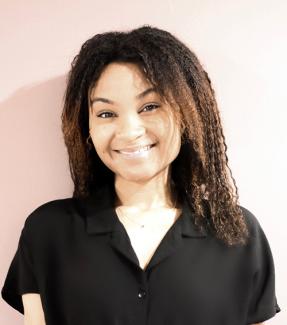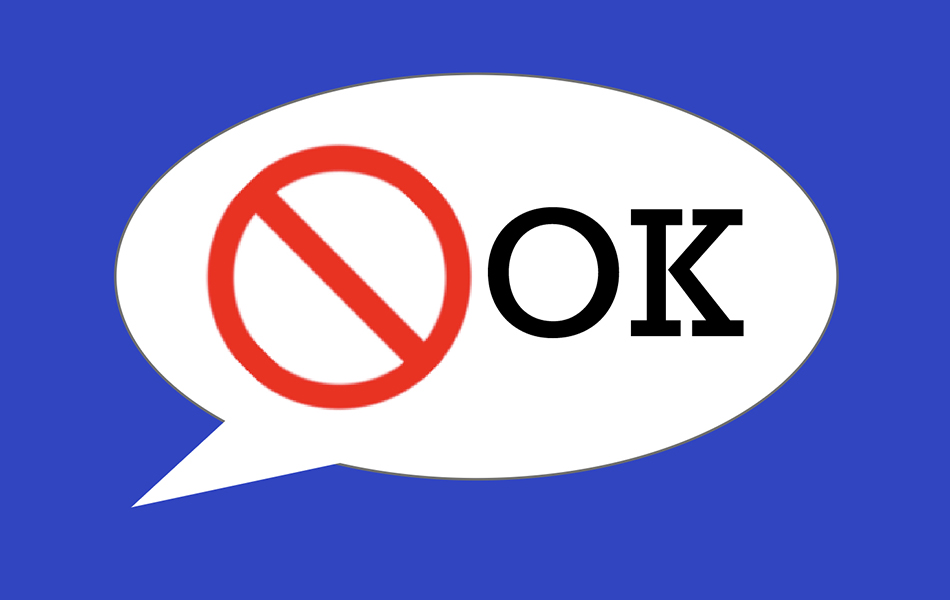How can you easily direct new immigrants to mental health services in Canada when they don't speak English or French? Enter the notOK app.
A final project for the Living Language: Science and Society course, notOK aims to communicate via emojis with non-English and non-French speakers seeking access to mental health services, removing language barriers and quickly pointing people towards help. And thanks to Arts Entrepreneurial Co-op funding, the app will become a reality this summer.
Fourth year psychology student Anjali Arora came up with the idea through her volunteer work at the Crisis Intervention and Suicide Prevention Centre of BC as well as an interest towards accessibility barriers due to language. Although translation services are available for crisis lines, less than one percent of callers used them in 2019, Arora says. She and her team saw the app as a first step towards catering to the mental health of Canadians who do not speak English or French, because “even if translation services aren’t the perfect answer, they are immensely better than no support whatsoever.”
Speech sciences student Katy Chen has always been passionate about mental health. When Arora pitched the app as a potential project, Chen saw its value.
I'm a second-generation immigrant, I can see the struggle in how health-related things might not come easily.
Biology and English Literature student Jasmyne Eastmond wanted to contribute a communicative resource to those subjected to adversity through communication barriers.

notOK was created by our interdisciplinary team to facilitate communication for those in crisis. Together we taught ourselves about accessibility, understanding, and sociocultural “norms” while trying to develop an app that would be understood by all.
Jasmyne Eastmond
The group built a browser-based prototype with hand-drawn emojis that assesses users' moods via a series of emotive faces. Depending on user selection, the app will display different phone numbers for free mental health resources in Canada, as well as 911 for people in imminent danger. Given most people have access to a smartphone, an app was more accessible, and discrete, than pamphlets or posters, Chen says.
Arora will work on creating and testing the app over summer as an Arts Entrepreneurial Co-op. “This would involve gathering data through focus groups to identify needs, improving the prototype based on feedback, creating the actual app, user testing it and finally launching a product that is effective in connecting people who don’t speak English or French to a crisis line when in need.”
Chen found the best parts of the group discussions were when people shared lessons learned in their faculty. Having learned to look at things a certain way, Chen appreciated a different discipline's take on certain tasks or methods.

Overall, Living Language was "a super great course," says Chen, which showed her a different way of thinking. She learned a lot about the different applications of language, including emojis, sign language, and language use in Artificial Intelligence. Guest lecturers on these subjects clarified the different applications of language, Chen says.
For me, the biggest take away was how diverse the field [of language] is, you can do a lot of things with it, and your degree doesn't define you.
The course taught Eastmond the power of language in establishing agency and identity. "I would recommend this course to anyone who is interested in their role in community building; understanding those around them; and linking biological, anthropological, and sociological understandings to appreciate the functions of language."
Especially in scientific writing, achieving the universal understanding and care for global scientific issues that are required to battle our current environmental crisis depends on how these issues are relayed to the general public and how language is used to promote understanding.
Being an interdisciplinary course, Living Language went beyond expectations in covering language and society, Arora says. “You get the opportunity to learn from your peers, instructors and incredible guest speakers as well as research into what piques your interest.”
“I recommend this course to everyone, whether they have a firsthand interest in the impact of language or knowledge in Linguistics or not.”
To learn more, visit languagesciences.ubc.ca/course or email living.language@ubc.ca
Read more in Pupa versus puppies: how language can be used to manipulate and other lessons from the Living Language course
